Etiqueta "base de datos"
Se han encontrado 8 Coincidencias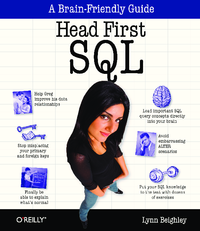
Head-First SQL
207 Visitas | 642 Descargas | 2013-10-03 16:20:26 | efirvida
Is your data dragging you down? Are your tables all tangled up? Well we've got the tools to teach you just how to wrangle your databases into submission. Using the latest research in neurobiology, cognitive science, and learning theory to craft a multi-sensory SQL learning experience, Head First SQL has a visually rich format designed for the way your brain works, not a text-heavy approach that puts you to sleep.

SQL Reference
SQL
140 Visitas | 192 Descargas | 2014-03-28 20:25:40 | josedanielr
This book is intended for anyone who wants to use the Structured Query Language (SQL) to access a database. It is primarily for programmers and database administrators, but it can also be used by general users using the command line processor. This book is a reference rather than a tutorial. It assumes that you will be writing application programs and therefore presents the full functions of the database manager.

SQL Pocket Guide
SQL
165 Visitas | 188 Descargas | 2014-03-28 20:28:35 | josedanielr
This book is an attempt to cram the most useful information about SQL into a pocket-size guide. It covers commonly used syntax for the following platforms: IBM DB2 Release 9.7, MySQL 5.1, Oracle Database 11g Release 2, PostgreSQL 9.0, and Microsoft SQL Server 2008 Release 2. Not all syntax will work on all platforms, and some features may not be available in earlier releases of these products. Whenever possible, I’ve tried to note any product or release dependencies.
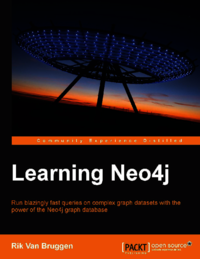
Learning Neo4j
Learning Neo4j. Run blazingly fast queries on complex graph datasets with the power of the Neo4j graph database
99 Visitas | 82 Descargas | 2015-11-05 19:49:40 | pecarrazana
Who this book is for: If you are an IT professional or developer who wants to get started in the field of graph databases, this is the book for you. Anyone with prior experience with SQL in the relational database world will very quickly feel at ease with Neo4j and its Cypher query language and learn a lot from this book.
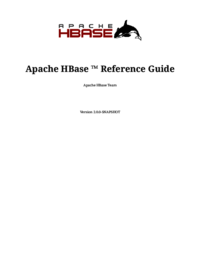
Apache HBase Reference Guide
Apache HBase
69 Visitas | 75 Descargas | 2015-11-10 20:19:12 | pecarrazana
This is the official reference guide for the HBase version it ships with. Herein you will find either the definitive documentation on an HBase topic as of its standing when the referenced HBase version shipped, or it will point to the location in Javadoc or JIRA where the pertinent information can be found.
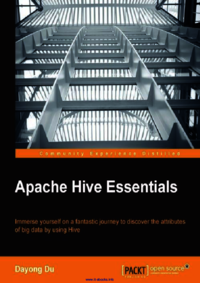
Apache Hive Essentials
Apache Hive
73 Visitas | 272 Descargas | 2015-11-13 20:52:40 | pecarrazana
Apache Hive Essentials prepares your journey to big data by covering the introduction of backgrounds and concepts in the big data domain along with the process of setting up and getting familiar with your Hive working environment in the first two chapters. In the next four chapters, the book guides you through discovering and transforming the value behind big data by examples and skills of Hive query languages. In the last four chapters, the book highlights well-selected and advanced topics, such as performance, security, and extensions as exciting adventures for this worthwhile big data journey.
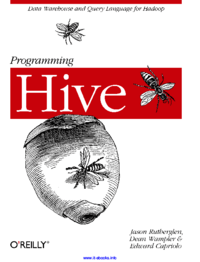
Programming Hive
Apache Hive
93 Visitas | 84 Descargas | 2015-11-13 20:56:41 | pecarrazana
However, a challenge remains; how do you move an existing data infrastructure to Hadoop, when that infrastructure is based on traditional relational databases and the Structured Query Language (SQL)? What about the large base of SQL users, both expert database designers and administrators, as well as casual users who use SQL to extract information from their data warehouses? This is where Hive comes in. Hive provides an SQL dialect, called Hive Query Lan- guage (abbreviated HiveQL or just HQL) for querying data stored in a Hadoop cluster. SQL knowledge is widespread for a reason; it’s an effective, reasonably intuitive model for organizing and using data. Mapping these familiar data operations to the low-level MapReduce Java API can be daunting, even for experienced Java developers. Hive does this dirty work for you, so you can focus on the query itself. Hive translates most queries to MapReduce jobs, thereby exploiting the scalability of Hadoop, while presenting a familiar SQL abstraction. If you don’t believe us, see “Java Versus Hive: The Word Count Algorithm” on page 10 later in this chapter.
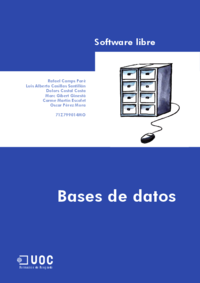
Bases de datos
Bases de datos
69 Visitas | 38 Descargas | 2022-04-06 00:57:00 | Idan
Las bases de datos son el método preferido para el almacenamiento estructurado de datos. Desde las grandes aplicaciones multiusuario, hasta los teléfonos móviles y las agendas electrónicas utilizan tecnología de bases de datos para asegurar la integridad de los datos y facilitar la labor tanto de usuarios como de los programadores que las desarrollaron.
Contribuir
Usted puede contribuir con Libros UCLV, es importante para nosotros su aporte..
Contribuir